About Tuttle
Books to Span the East and West Our core mission at Tuttle Publishing is to create books which bring people together one page at a time. Tuttle was founded in 1832 in the small New England town of Rutland, Vermont (USA). Our fundamental values remain as strong today as they were thento publish best-in-class books informing the English-speaking world about the countries and peoples of Asia. The world has become a smaller place today and Asias economic, cultural and political influence has expanded, yet the need for meaningful dialogue and information about this diverse region has never been greater. Since 1948, Tuttle has been a leader in publishing books on the cultures, arts, cuisines, languages and literatures of Asia. Our authors and photographers have won numerous awards and Tuttle has published thousands of books on subjects ranging from martial arts to paper crafts.
We welcome you to explore the wealth of information available on Asia at www.tuttlepublishing.com.
AFTERWORD When I was a child, there was moss along the route I took to school. There was also moss on the lower parts of the embankment along the Tonegawa River. Its green shades covered patches between dead grass at the start of spring when horsetail and violets showed their faces. After rain, it gave off a vibrant glow. Mounds of it grew on the sides of the concrete block walls of our house.
When I furtively peeled it off and placed it on my grandfathers bonsai as I had seen him do, I was scolded. Moss was a familiar sight that we took for granted. We did not think of it as something precious. Now that I am an adult, I look down more frequently when I walk. Strolling through an urban business district, I see moss growing on the asphalt. There is no soil and the air is not particularly clean, but there it is, surviving in the scant topsoil on the side of the road.
My face breaks into a smile. Some days the moss is bright and radiant, at other times its leaves are closed and it has shrunk into itself. Either way, the memory of it remains with me today, always by my side in the form of moss bonsai and as part of kokedama . The moss that is used in horticulture is cultivated, but just like the moss in mountains, forests and urban areas, it takes many long months to achieve its size and form. Until I decided to grow moss myself, I simply assumed it was always around and would grow before you even noticed it. But just as magnificent pine trees and gorgeous blossoming cherry trees reach great ages, so the moss underfoot grows along with them.
Once you have some moss at your home, look after it carefully. Sometimes there will be disappointmentsit will change color or may wither a littlebut do not give up on it, give it time and care for it patiently. Moss is resilient. It may take some time, but it will slowly acclimatize to your home and put forth new leaves. I am sure you will see moss around town. It has been quietly forming clusters and living its life until the moment your eyes alighted on it.
What a beautiful, brave, tough thing it is! 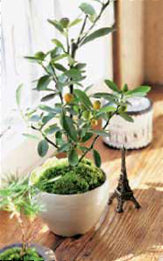 Megumi Oshima
Megumi Oshima
Midoriya Nicogusa (www.nicogusa.com) Moss tray landscape is probably not a familiar concept. Simply put, a moss tray landscape is a bonsai landscape that creates a miniature universe, a nostalgic scene shrunk to fit into a little receptacle. Mountains, valleys, rocky hills, upright trees beyond the rocks, little mountain plants growing in the valleysall of these are depicted using living plants, such as various mosses and wild vegetation. Of course, each of these original creations are one of a kind, unique. I am a bonsai lover from way back and have cultivated many trees over the years. However, I started to feel that something was lacking in the bonsai I cultivated, which could only be admired for the trees growing in them.
When I was repotting and transferring my collection, I began creating ridge lines with the soil, making little rivers and ponds and attaching various types of moss, grinning to myself as I worked. One day, I realized I had not even one thick, mature tree left, they had all changed to be as thin as toothpicks covered in hair. Where once my bonsai had mature, upright trees in the lead roles, they had been replaced by moss starring in moss tray landscapes. Even though it is more than 20 years since I fell under the spell of moss, it has caused me much sorrow too. Why did it turn brown and shrivel when its surroundings changed? Why did it go frizzy? I was reduced to tears when moss that had been a beautiful deep green when it was growing on its own withered in less than a week of being planted in a pot. It did not matter how many times I repotted it, the result was the same.
Because there were extremely few books about moss available at the time, I took to asking moss enthusiasts for advice. I learned through their stories that moss has no roots through which to take in water. It survives by absorbing moisture from the air, which is why it must not be watered too much. I found out that it gets its nutrients through photosynthesis, so if it does not get the right amount of sun, it will wither. As someone who had thought moss needed to be placed in the shade and never allowed to dry out, when I discovered these things it was as if the scales had fallen from my eyes. I also came to understand other things, such as that some mosses enjoy sunlight while others dislike it and some need water while others require very little.
Anyone who makes a hobby of gardening will most likely have experienced difficulties with moss once or twice. This book explains how to choose the types of moss most suitable for moss tray landscapes and how to make and maintain them. If it helps all those who want to try moss gardening, I will be very happy. Hideshi Kimura
Japan Horticulture Society Tray Landscape Artist 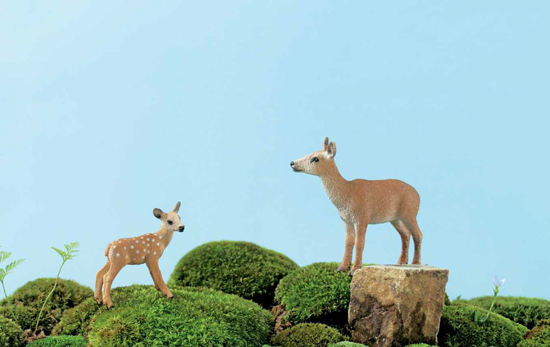
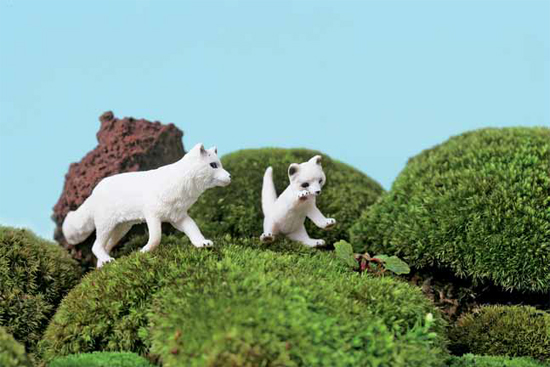
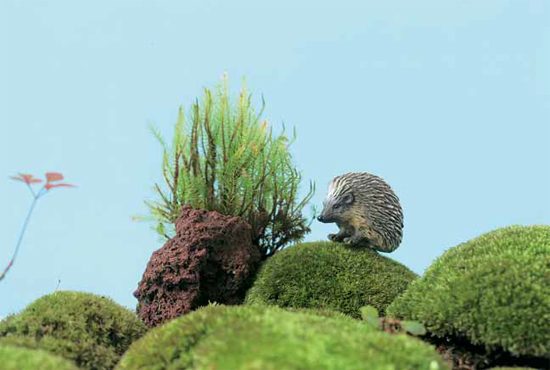
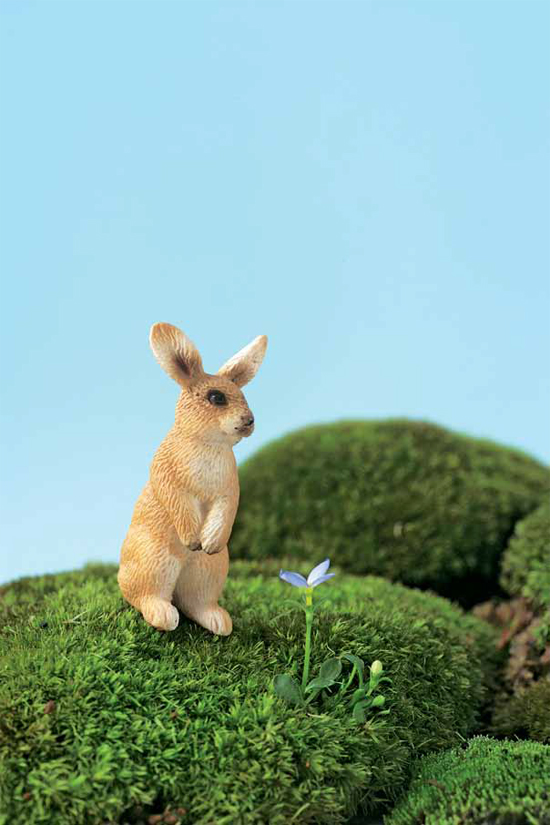
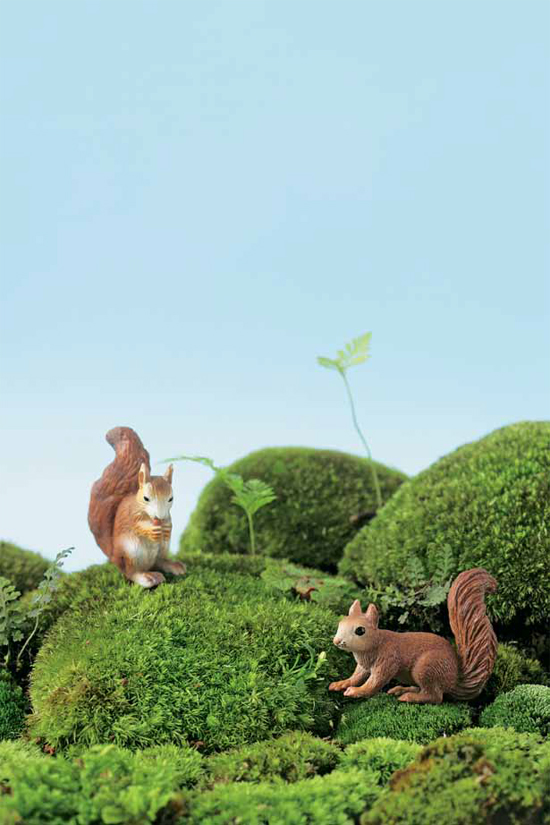

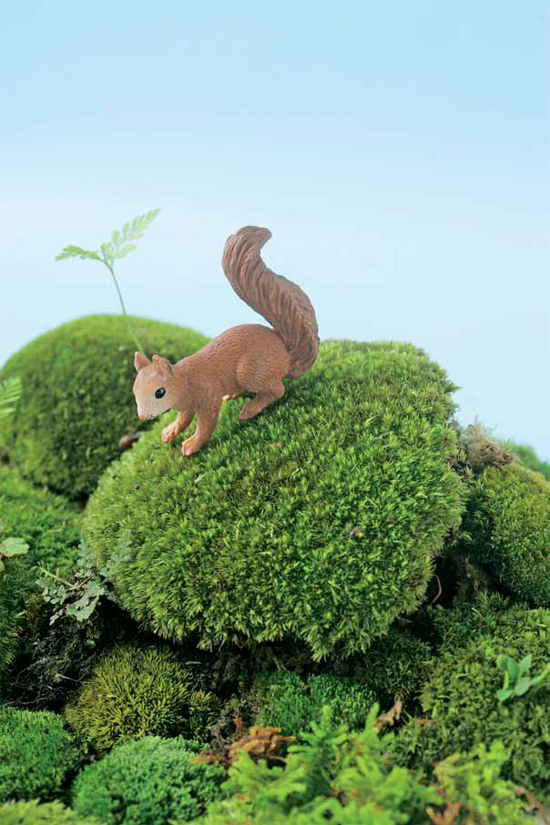
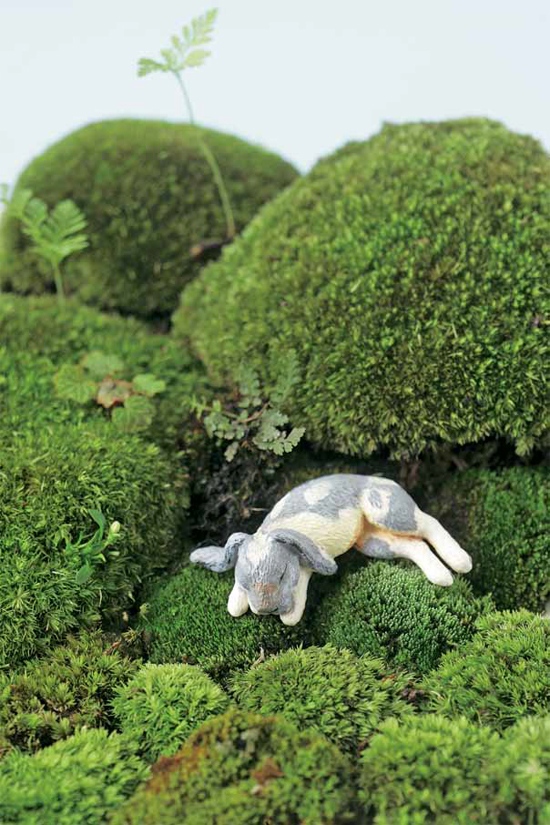
Chapter 1 An Introduction to Moss Nice to meet you! Is moss even a plant? Are all green things mosses? This simple introduction is for those who are not sure of the differences between the various types of moss.

What is Moss? Soft and green, moss is a delightful plant. Properly looked after, it can be with you for years.
Next page
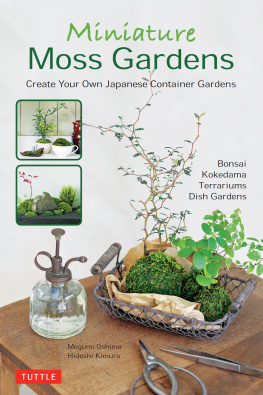

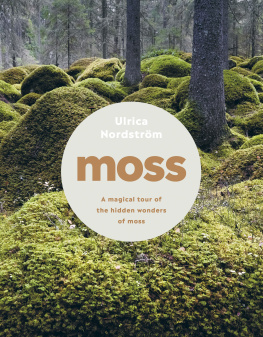
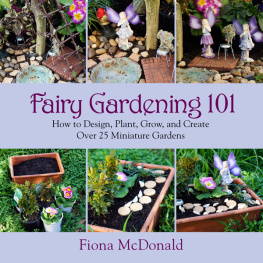



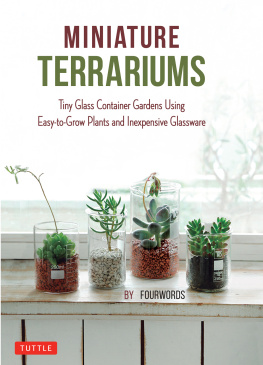
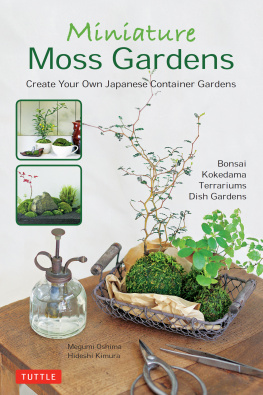
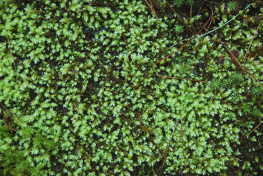
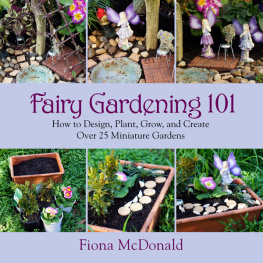
 Megumi Oshima
Megumi Oshima







 What is Moss? Soft and green, moss is a delightful plant. Properly looked after, it can be with you for years.
What is Moss? Soft and green, moss is a delightful plant. Properly looked after, it can be with you for years.